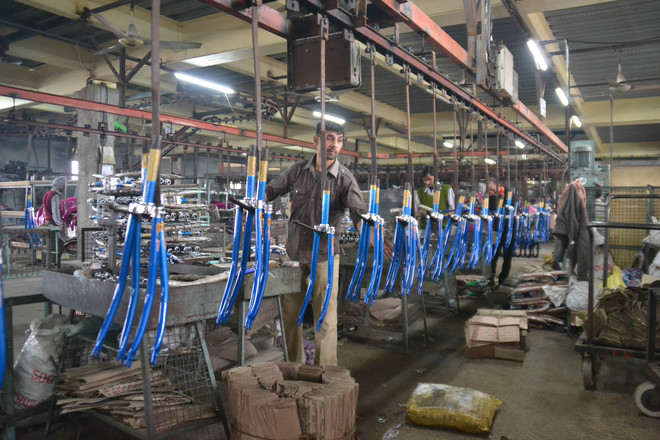Chandigarh: The month-long coronavirus-induced curfew has brought Punjab’s economic activity to a grinding halt, a state task force report said.
The state lost about Rs 1,200-1,700 crore of GDP per day during the first days of lockdown.
The major contributors to the GDP — manufacturing, agriculture, investment and trade — are expected to get adversely affected not only during the period of lockdown, but also in the coming months, the ‘Exit Strategy for Covid-19 Lockdown Restrictions’ report said.
The Micro, Small and Medium Enterprises (MSME) sector, the largest employer in the state, is expected to be the worst hit.
Punjab Chief Minister Amarinder Singh set up the task force to find ways for the state to gradually get out of the unprecedented lockdown that is still in place to fight the pandemic.
Known as the ‘Granary of India’, Punjab is the highest contributor of wheat and rice to the central procurement pool. “This (April-May) period is very crucial as it is the opportune time for harvesting of the rabi crop and sowing of the kharif crop. If the curfew is not eased, it may give a big jolt to the food security of not just the state but the entire country,” warned the report.
Further, Punjab’s economy is staring at a possible contraction after a gap of about 40 years.
The state’s fiscal situation may suffer gravely as tax and non-tax revenue streams dry up due to shutting down of economic activity. Adequate provisioning of funds to meet requirement of health and social sectors cannot be avoided, said the report.
While the task force hopes for a greater autonomy to states in deciding future course of action, it recommends pertinent amendments in the consolidated revised guidelines issued by the Union Ministry of Home Affairs to accelerate the revival of labour market and reboot the stagnant industrial economy for consideration from May 15, in case the lockdown is extended beyond May 3.
It recommends that the lockdown exit strategy be classified into health and non-health related objectives.
Health-related objectives include measures to contain the spread of Covid-19 through ramping up healthcare procedures, systems and supplies, while the non-health related objectives include measures to restore economic activities to near normal through easing up of the supply chains and logistics, especially for the seamless movement of essential goods and services, restoration of livelihood, manufacturing activities, solutions for migrant labour, it said. The 20-member task force, led by former IAS officer KR Lakhanpal, was tasked with suggesting measures, both in the short-term and medium-term, to address the public policy challenges for dealing with the pandemic.
Meanwhile, the government April 25 constituted another panel of experts, headed by noted economist and former Deputy Chairman of the Planning Commission, Montek Singh Ahluwalia, to come out with the post-Covid revival strategy for the state.
Former Prime Minister Manmohan Singh will assist this group, which includes leading economic and industry experts, and has been entrusted with the task of identifying the key actions that are needed to help Punjab get to its ‘new normal’ growth rate and restore it to a pre-eminent position.
It will recommend to the state a short-term (one year) as well as medium-term action plan, including a fiscal management strategy along with other policy measures to revive the state’s economy in the aftermath of the Covid-19 crisis. The group has been mandated to submit its initial set of recommendations by July 31, followed by two more reports by September 30 and December 31.
Punjab reported its first coronavirus case on March 5. As on April 27, there are 330 confirmed cases with estimated increase of 10 per cent. The number of deaths in March was four. As on April 27, the death toll has jumped to 19. The average age of deceased patients is 60 years.
